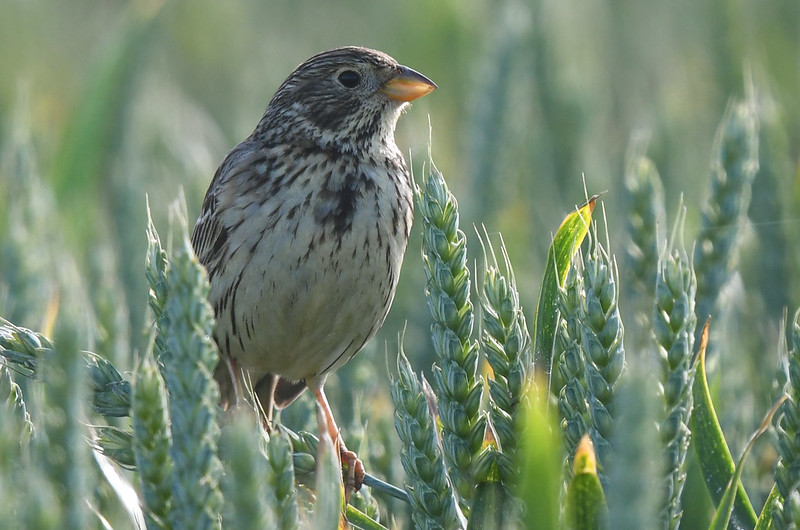
Jangling keys – that’s how a Corn Buntng sounds.
Here are examples of jangling keys from across Europe.
Here’s one from Oropesa, Spain:
…and another Spanish bird from Tarifa;
…and one from Yorkshire, UK;
There is a single pair of Corn Buntings in Northamptonshire, I gather. I used to see them in several places, but now just one pair, in a fairly secret locality. A bird that has gone from commonplace to one place in a generation.
I always think of Corn Bunting songs from central Spain, like the one from near Oropesa (with its Lesser Kestrels on the Parador) above. My travels in Spain have often been punctuated by a stop by the roadside to have a drink of water, to look at the view or to scan the fields for bustards or harriers, and so often one hears a Corn Bunting jangling away – sometimes several. Corn Buntings are still embedded firmly in the Spanish countryside even though they are largely lost from ours. As one looks around, the farmland doesn’t look that different very often – cereals stretch for miles. But look even closer, down at one’s feet, and there is a good chance that one will see a large beetle walking past, or several, and the thin patch of grass will have crickets and grasshoppers and a range of other large tasty-looking insects. I’ve always thought that must be one of the reasons why Spain still has a jangling countryside.
By the way, the male Corn Bunting may not have a brilliant song and it may not have a gaudy plumage, but it is one of the most polygynous of our birds – some males have been recorded with up to nine females (which means that there are another eight males that are singing like mad and getting nowhere).
And also by the way, by the Ridgeway in Oxfordshire in fact, I remember a volunteer for a project on Corn Bunting songs who had two rather extreme drawbacks as a fieldworker. He, for it was a he, didn’t like the look of Didcot Power Station and wouldn’t work within sight of it, which was quite bizarre, but also the volunteer was rather deaf. And so in making sound recordings of Corn Bunting songs, for which he had volunteered, he watched the bird and quickly turned on the tape when he saw the bird open its beak – thus almost always missing the first bit of the song. It wasn’t a great success.
[registration_form]
Saw a single Corn Bunting when I visited Norfolk a few years ago. Very sad to see all the wildlife disappearing from our farmland.
Corn Bunting was the commonest bird in much of the habitat I saw this time last year in Spain ( thanks Ian!). They were everywhere in the farmland. Here in Wales I believe they are extinct, whilst in my old haunts in North Yorkshire they are of limited distribution and certainly declining still. The best place I know is north east of Strensall Common. The song fits perfectly in those hot late spring or early summer days when the air is buzzing with insects. Spurn BO used to have hundreds just to the north in winter around 40 years ago but no longer.
A site that once used to have corn buntings close to where I grew up is now covered with massive distribution warehouses. Progress eh.
Didcot Power Station has now gone the way of the corn bunting.
And presumably the Peregrines that were residents on the Power Station have also gone.
Extinct as a breeding bird in West Glamorgan since the mid 1940s.